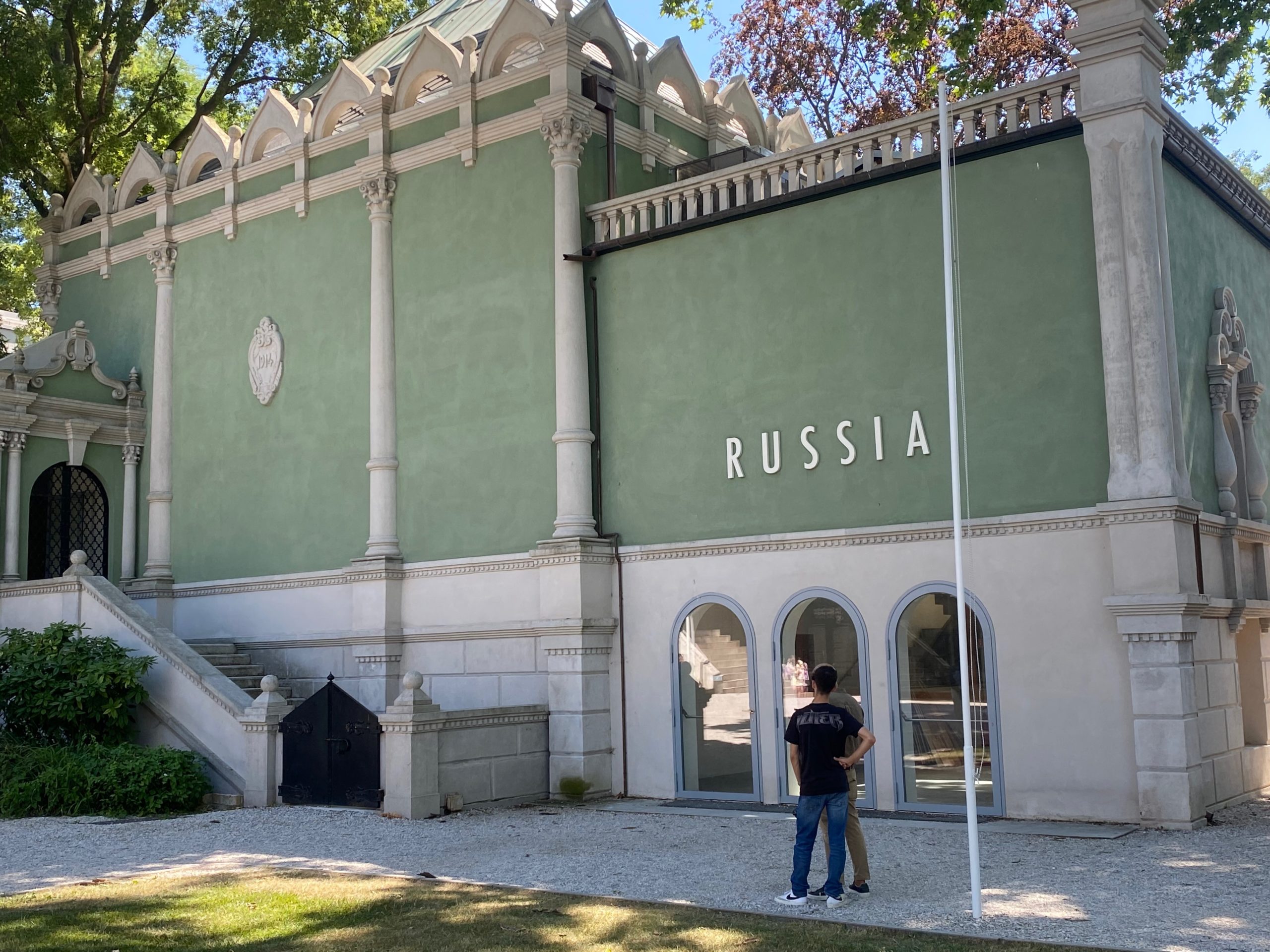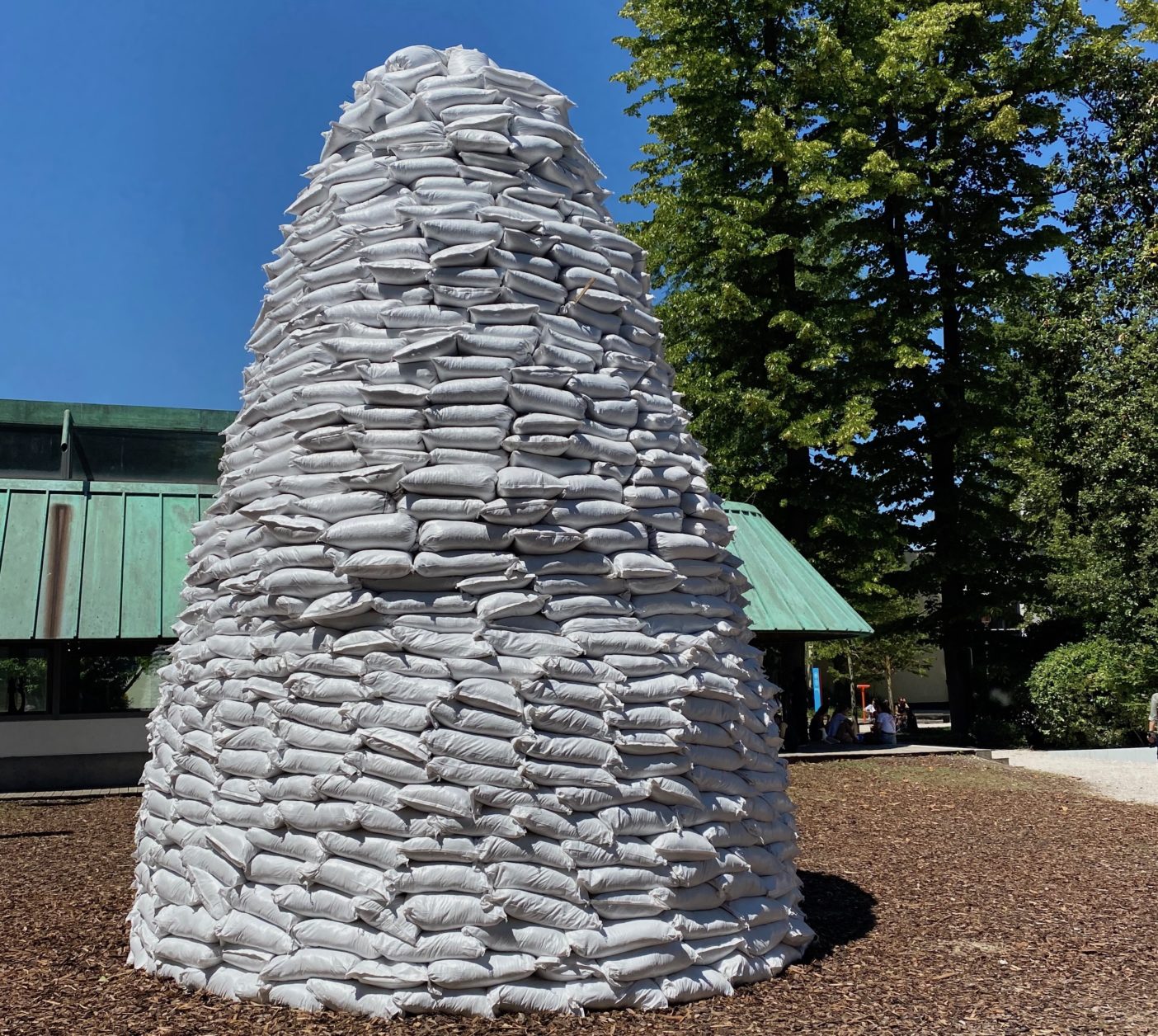Biennale di Venezia: al padiglione della Russia è il silenzio a parlare
Il Padiglione della Russia alla Biennale è un fantasma, chiuso, abbandonato e muto. Perché non c'è posto per l'arte quando i civili muoiono sotto i missili.

Il Padiglione della Russia alla Biennale è un fantasma, chiuso, abbandonato e muto. Perché non c'è posto per l'arte quando i civili muoiono sotto i missili.

(English translation below)
Si vada e ci si raccolga, in silenzio, per un minuto. È il più triste ma anche provocatore ed eloquente padiglione della Biennale: quello russo, chiuso e silenzioso, senza bandiera, abbandonato dal curatore Raimundas Malasauskas e dagli artisti Alexandra Sukhareva e Kirill Savchenkov, in coraggiosa protesta perché
“non c’è posto per l’arte quando i civili muoiono sotto il fuoco dei missili e quando chi protesta in Russia viene ridotto al silenzio” e perché “l’idea di continuare a vivere a vivere sotto un impero, russo o qualunque altro, è semplicemente intollerabile”.
A suo modo, il padiglione russo è una visione che ricorda quello della Spagna di una Biennale di anni fa, che era accessibile solo a chi all’ingresso presentava un passaporto spagnolo. Gli altri restavano fuori, nonostante il biglietto pagato.
Sul momento c’erano proteste, ma poi chi, spagnolo, entrava, ne usciva assicurando che all’interno le stanze erano del tutto vuote: il senso della provocazione era far sperimentare sulla propria pelle cosa significhi passare ed esserci o restare fuori e non vedere niente, solo sulla base di un documento. Così, la Russia quest’anno: una porta chiusa, una bandiera che non c’è, assenze che si rappresentano.
Intorno, c’è il resto del mondo – davanti la Danimarca, di fianco il Giappone e il Venezuela – pieni di idee.

E a pochi metri, a fare da controcanto al non-padiglione russo, la rappresentazione di un monumento, uno qualsiasi oggi a Odessa o Kiev: solo un grande cono di sacchi sabbia.
Non servono molte parole, anzi nessuna, neanche in questo scritto. Chiuso e non visitabile, e chiuso e non visibile – due forme di protezione.
ENGLISH VERSION
The Russian Pavilion at the Biennale is a ghost, closed, abandoned, and silent. Because there is no place for art when civilians die under missiles.
Please, go and there pay a minute of silence. It is the saddest but also provocative and eloquent pavilion of the Biennale: the Russian one, closed and silent, without a flag, abandoned by the curator Raimundas Malasauskas and by the artists Alexandra Sukhareva and Kirill Savchenkov, in courageous protest because “there is no room for art when civilians die under missile fire and when those who protest in Russia are silenced ”and because“ the idea of continuing to live under an empire, Russian or any other, is simply intolerable ”.
In its own way, the Russian Pavilion is a vision that recalls that of Spain from a Biennale years ago, which was accessible only to those who presented a Spanish passport at the entrance. The others stayed out, despite the paid ticket. At the time there were protests, but then those who, Spaniards, entered, came out assuring that inside the rooms were completely empty: the sense of the provocation was to experience first-hand what it means to “pass and be there” or “to stay outside and see nothing”, only on the basis of a document. Thus, Russia this year: a closed door, and a flag that is not there, are sparking absences.
All around, there is the “rest of the world” – in front of Denmark, close by Japan and Venezuela – all of them full of ideas.
And a few meters away, to counterbalance the Russian non-pavilion, the representation of a monument, anyone today in Odessa or Kiev: just a large cone of sandbags.
Not many words are needed, indeed none, not even in this writing. Closed and not open to visitors, and closed and not visible – two forms of protection.
